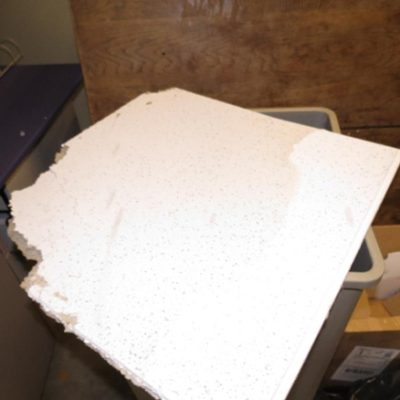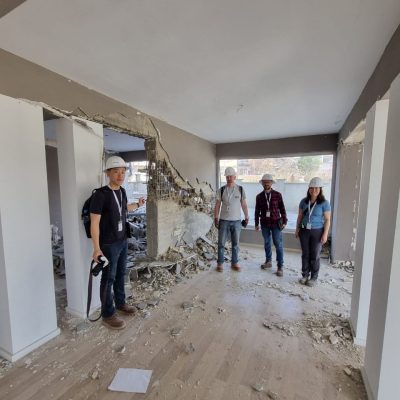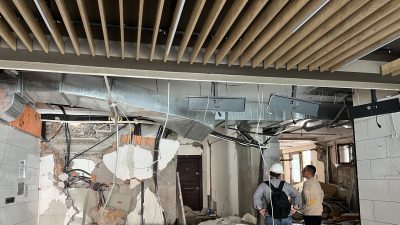Final Thoughts from Degenkolb Engineers Team 1
On February 6th, 2023, a 7.8 magnitude occurred in south-central Turkey. About nine hours later, a 7.5 magnitude aftershock struck about 60 miles away. These events, including other aftershocks, would be known as the 2023 Kahramanmaraş earthquake.
Several weeks later, Team 1—consisting of David Sommer, Jose Flores Ruiz, Jerry Luong, and Kim Bocanegra—was deployed to Turkey and spent a total of six days observing the earthquake damage. During our time there, we visited over ten cities that were reported to be impacted by the seismic events.
Most of the construction observed consisted of multi-story buildings with structural systems of concrete frames with block infill structures. Most buildings consisted of mixed-use functions, often with open-front commercial spaces on the first floor and residential use on the upper floors. Many cities had buildings that shared walls with adjacent buildings, tying their responses to the shaking together.

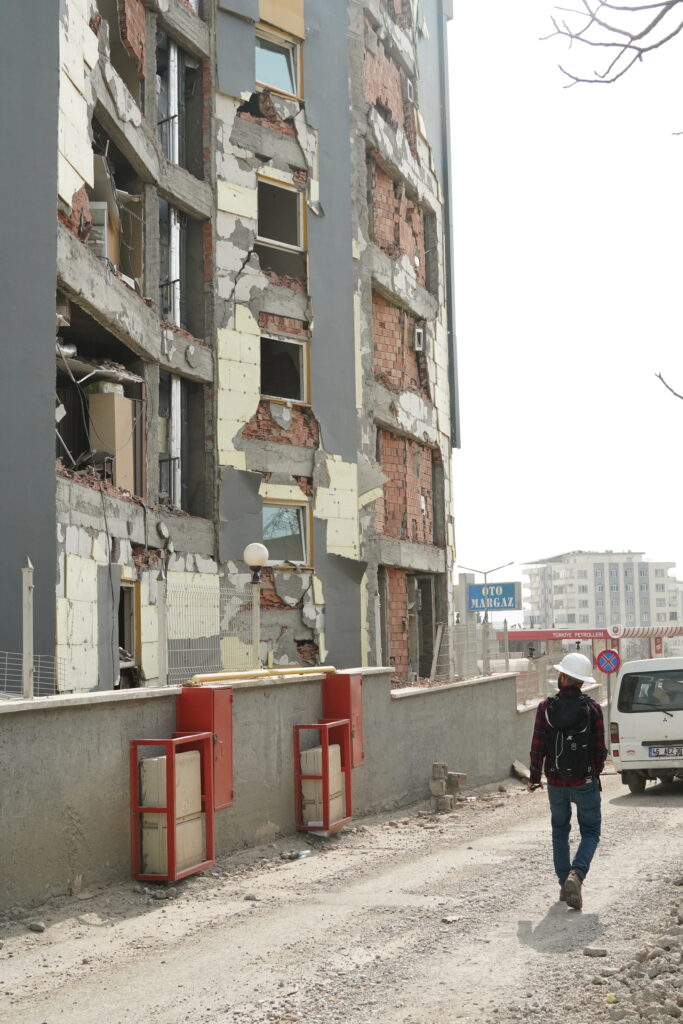
Jose Flores Ruiz Observing Severe A+MEP Damage
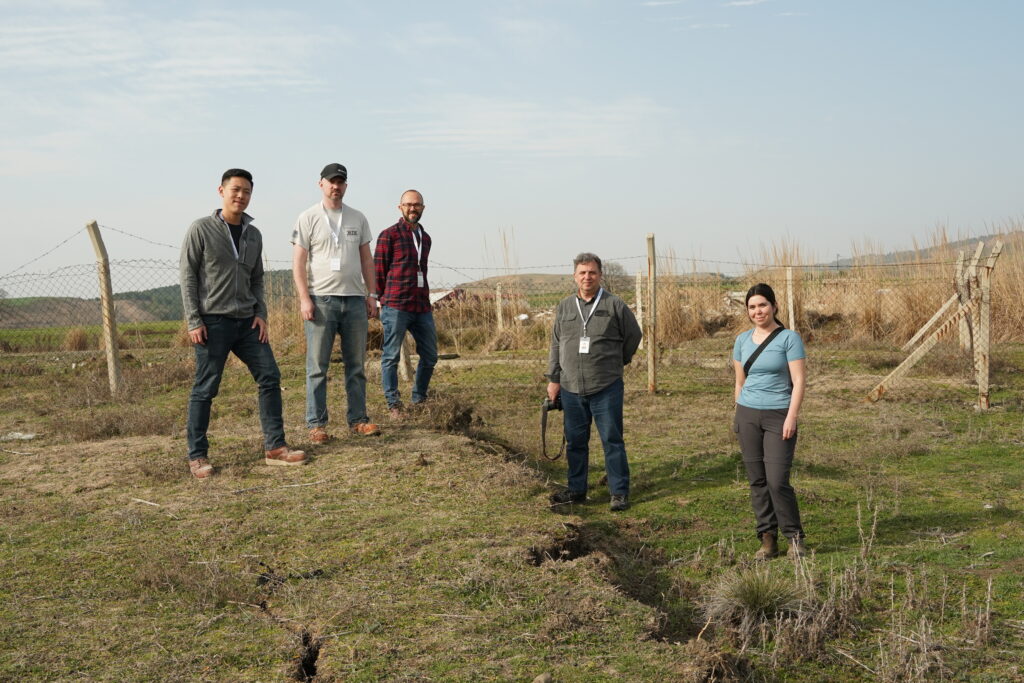
Jerry Luong, David Sommer, Jose Flores Ruiz, Rafael Alaluf, and Kim Bocanegra Visiting Surface Rupture
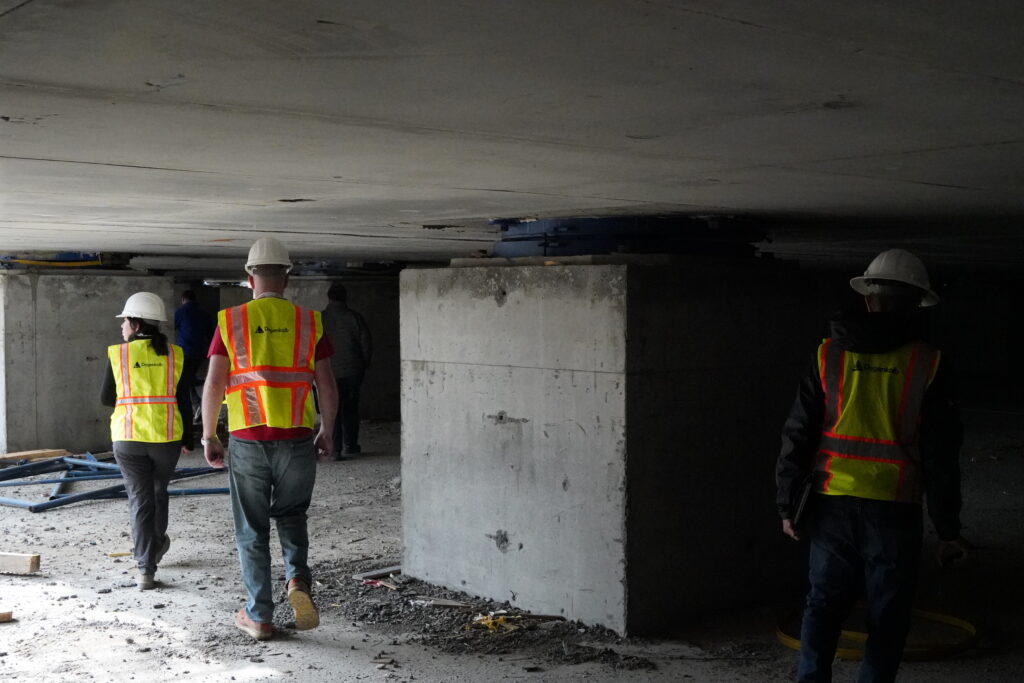
Kim Bocanegra, David Sommer, and Jose Flores Ruiz Observing Damage to Locked Isolators in Hospital Under Construction
We were struck by the apparent randomness of damage–there was often no discernable pattern as to why one building was affected more than similar adjacent buildings. However, amongst all the damaged structures, there were a few prominent reminders of how thoughtful engineering matters:
- Buildings with longer concrete walls performed better in general than buildings with shorter walls (if detailed correctly).
- Poor detailing at beam-column joints and poor-quality materials almost certainly led to the collapse of many buildings.
- Engineers need to carefully consider how different elements may affect building performance. The infill walls and stairs added stiffness to structures that was not accounted for, often leading to soft-story failures where the ground floor collapsed.
- Engineers, contractors, and building officials/inspectors make up a three-legged stool of safety, and all three need to work together in good faith for the community to have confidence in the safety of their structures.
- Heavy buildings, such as those built with concrete or masonry, should be given extra attention. The collapse of these buildings can kill people.
- Good building performance extends beyond structural performance.
- Means of egress should always be maintained. We saw too many examples of stairs that were tied in at floors above and below and ended up acting as nonductile braces. When stairs are damaged, it slows or stops occupants from fleeing an unsafe building. In addition, falling nonstructural items like partition walls and ceilings can block exit pathways.
- Local soil conditions made a huge difference in which buildings were impacted the most by seismic waves. Good geotechnical investigations are essential to designing a safe building.
- Architectural, Mechanical, Electrical, and Plumbing equipment and fixtures can pose falling hazards to building occupants if they are not properly secured. This also plays a large part in the building’s recovery time.
- Adjacent buildings which are unsafe can collapse into or push on an otherwise safe building and cause significant damage. Falling hazards on one building may also limit access to adjacent buildings.
Our trip impacted all of us on a personal level. The huge number of deaths and displacements of Turkish civilians were hard to grapple with, especially when looking at building failures that have been seen over and over around the world, including in Turkey, for the past 50 years or more. This disaster could have been prevented to a large degree. Our hope is that the Turkish engineering and construction community will learn these hard-earned lessons and improve their practices to build safer buildings. Existing buildings with similar deficiencies should be retrofitted to prevent a future disaster.
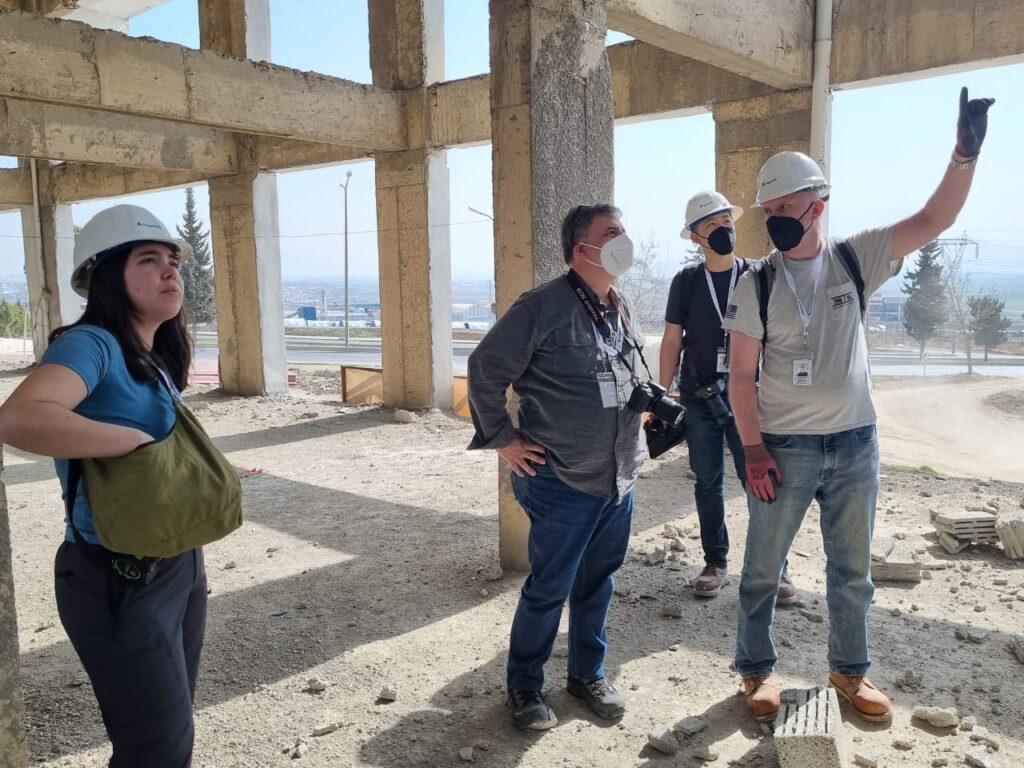
Kim Bocanegra, Rafael Alaluf, Jerry Luong, and David Sommer Observing Damage to Concrete Frame Structure
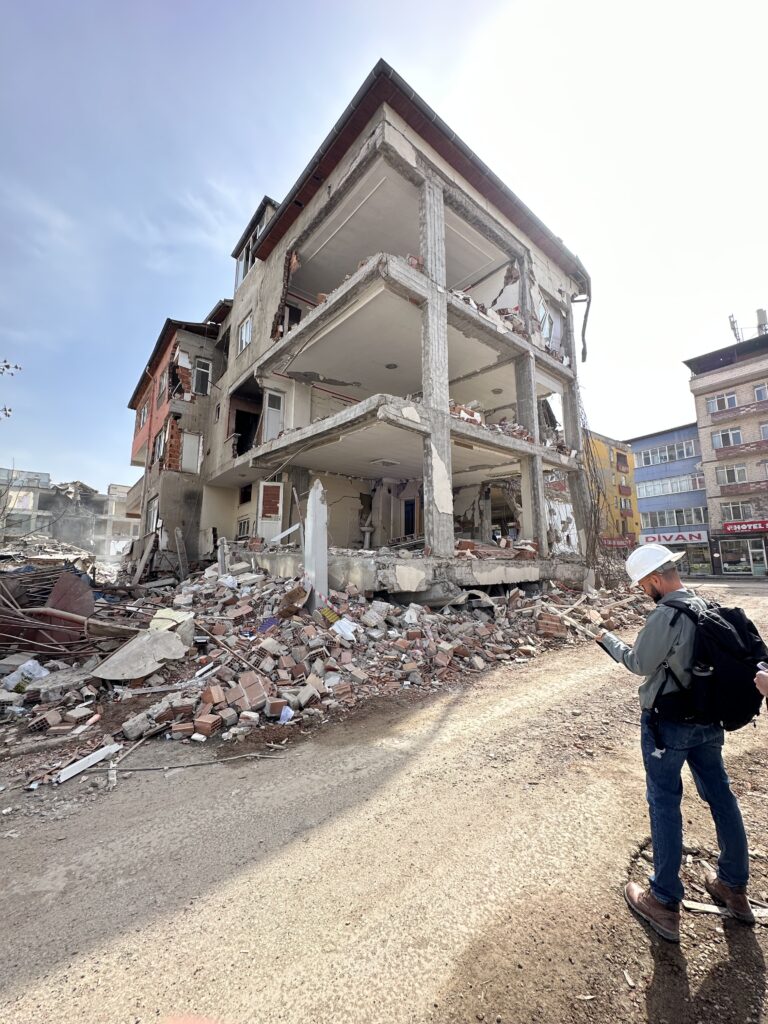
Jose Florez Ruiz Observing Damage to Concrete Frame Structure
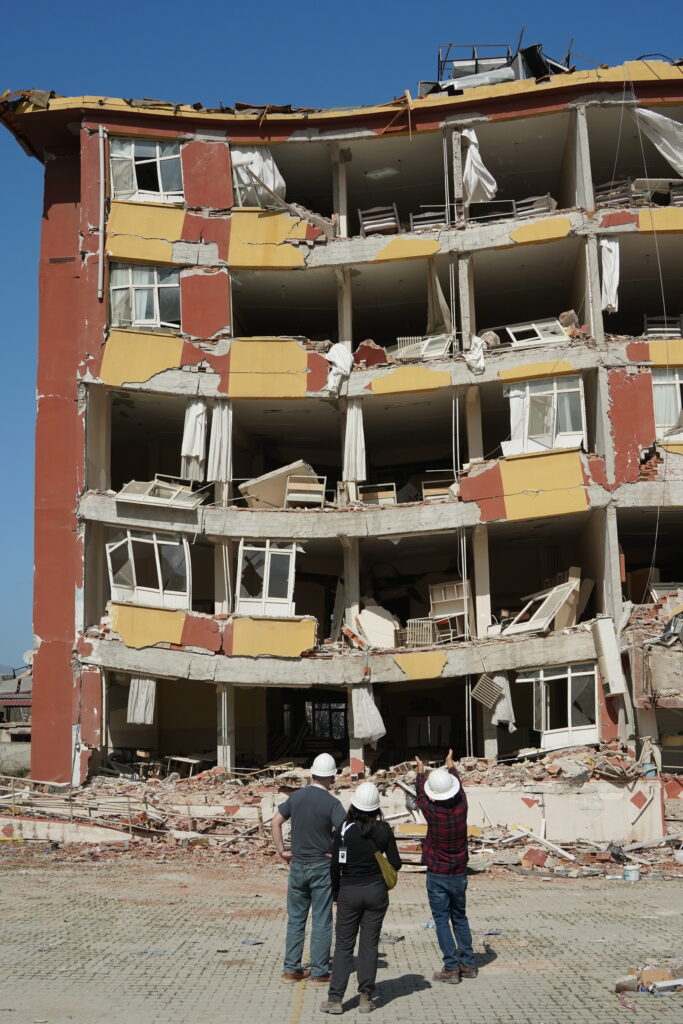
David Sommer, Kim Bocanegra, and Jose Flores Ruiz Observing Partial Collapsed Structure
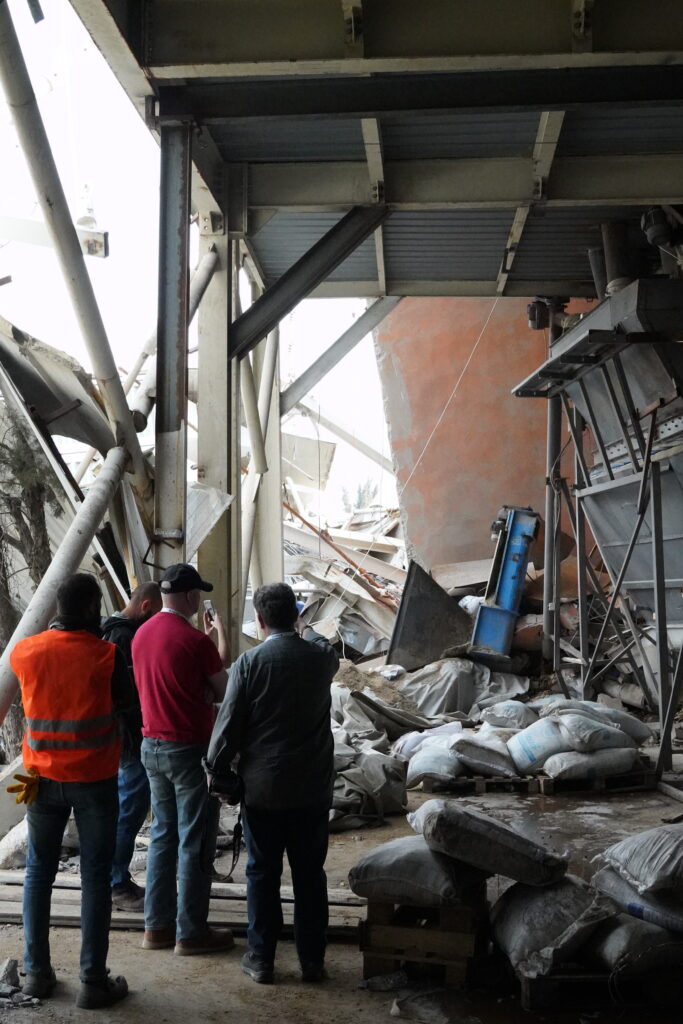
Team 1 Members Observing Damage to Steel Structures Due to the Collapse of the Adjacent Structure
After every large earthquake, there is something to be learned. Our message is to let us not wait for a disaster to show us that our older buildings are dangerous. Let’s ensure our buildings get evaluated and retrofit if needed, particularly our older brick and concrete buildings. The strength and resilience of our communities may depend on it sooner than we think.
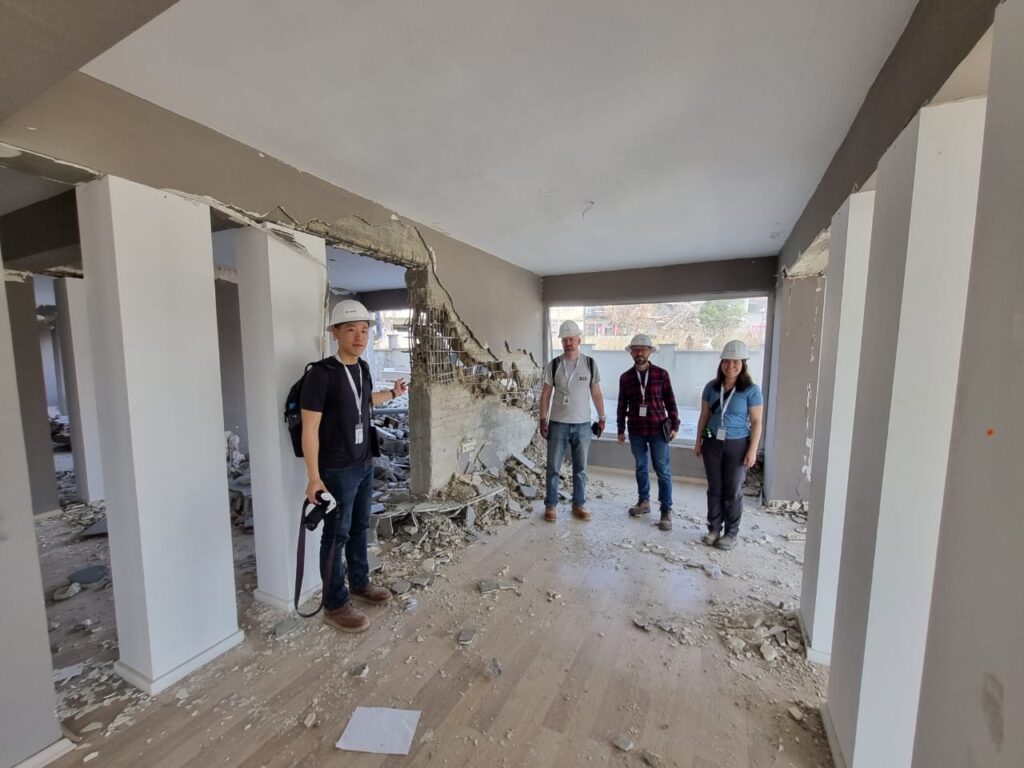
Jerry Luong, David Sommer, Jose Flores Ruiz, and Kim Bocanegra Standing Near a Heavily Damaged Shear Wall
